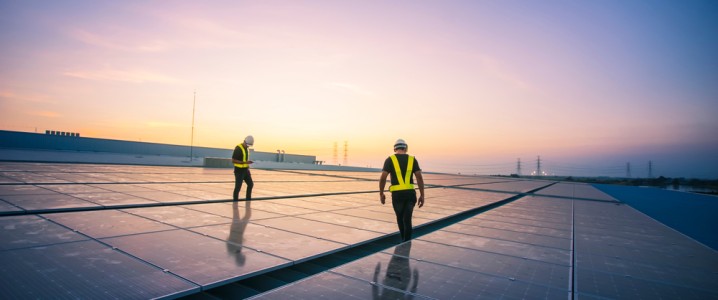Shares of the top Chinese solar manufacturers surged in Shanghai on Tuesday, following a state media report that China’s authorities plan stricter controls on the bloated manufacturing capacity that has created price wars and massive losses for companies.
Shares in Trina Solar (SHA: 688599), the top manufacturer, jumped by more than 9%, JA Solar Technologies (SHE: 002459) surged by 9%, and LONGi Green Energy Technology Co Ltd (SHA: 601012) soared by 6.5%, to name a few.
The solar stocks rally followed a Tuesday report by state-run Securities Times that Chinese authorities are preparing to issue a notice on strengthening the regulation and control of solar production capacity.
Earlier this year, China launched in earnest the drive to curb excess capacity in the solar manufacturing sector, which has doomed many companies to price wars and deepening losses.
The combined losses of six of China’s biggest solar panel and cell manufacturers doubled in the first half of 2025, to $2.8 billion (20.2 billion Chinese yuan), from the same period last year, the Financial Times reported last month, citing data from local financial information provider Wind.
All top Chinese solar equipment producers had already booked losses for the first quarter of 2025, blaming the continued losses on low product prices and the trade and tariff turbulence under U.S. President Donald Trump.
The Chinese solar wafers, panels, switchers, and other equipment producers have been struggling on the domestic market amid overcapacity that China’s authorities moved to address only in late 2024.
This summer, China’s authorities stepped up efforts to tackle the overcapacity in China’s clean technology industries.
Chinese authorities have realized that cutthroat competition, overcapacity, and low-quality manufacturing are hurting enterprises. Following months of introducing several measures to try to curb excess cleantech manufacturing capacity, China has now vowed to become more serious in addressing the problem.
Chinese authorities and media have intensified in recent months the message that the “disorderly price competition” and overcapacity need to be addressed.
By Tsvetana Paraskova for Oilprice.com
More Top Reads From Oilprice.com:

